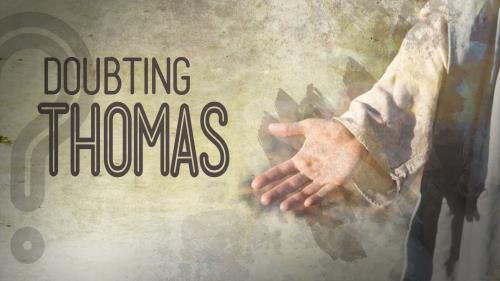-
The Religiously Immunized Series
Contributed by J. D. Greear on Apr 15, 2014 (message contributor)
Summary: What are you looking at right now as your salvation?
Ever seen one of these? It’s called a “gospel tract,” and it is how I was taught to share the gospel. Think of it as a short, tri-fold pamphlet that explains the basic points of the gospel. There’s no end to the number of these, ranging from the “no-nonsense, give‐it‐to‐me‐alliterated” version to the (monopoly pic) “creative adaptation of cultural icon” version to the “fake 10 dollar bill with the ‘here’s a real tip, trust Jesus’” admonition on the back (dollar bill: “disappointed?”). I loved the “in your face” tracts (Uncle Sam pic) “Chick tracts” were deluxe, featuring a multi-paged comic theme with scary pictures of demons coercing people to listen to Christian rock music and read versions other than the KJV. (“caught in web?” and “two viruses” pics, side by side)
We learned how to give these tracts to waitresses or those seated next to us on planes (especially if they looked nervous). If personal interaction made you uncomfortable, you could deposit these tracts stealthily in public restrooms, leave them in VHS tapes you were returning to Blockbuster, or (one of my favorites) asking the toll both attendant to give it to the person in the car behind you while you paid their toll. Or this one: (condom rack) One pastor even showed me how to hold a tract next to your car and release it so that it would land at the feet of someone standing on the side of the road as you drove by at a cool 35 MPH. I wish I were joking about some of this.
If someone asked Jesus into their heart during a gospel‐tract presentation, there were a number of things we were supposed to say to them, printed helpfully for us right on the back of the tract.
• You were supposed to place an emphasis on Bible reading, prayer, and church attendance.
• You were also supposed to say something like this to them: “Now that you’ve accepted Christ as your Savior, you are saved forever. You are guaranteed to go to heaven. He promises never to leave or forsake you and no one can pluck you out of your Father’s hand. So, from here on out, you are saved no matter what. Welcome to the family of God.”
Did you know that a 2011 Barna study1 shows that 50% of Americans say they have prayed a prayer like that, and subsequently believe that they are going to heaven, because that’s what they have been told… however, half of them have no regular presence in any kind of church; about the same number think the Bible is wrong about a lot of what it teaches; and about 2/3 have lifestyles and worldviews that in no way differ from those outside of the Christian faith.
These people hear the message of Jesus, about the need to be saved, and come to Christ, and they think, “oh… been there, done that… I’ve prayed the prayer; been to the class; been baptized or confirmed; or whatever. I’m good. My grandma was there. It was super--‐meaningful.”
But what I want to show you today is that the Bible speaks frequently about a kind of faith that is superficial, that doesn’t go very deep and that doesn’t save at all.
The tragedy is that for a lot of people their superficial faith has immunized them from understanding their need for the real gospel.
(1: http://www.barna.org/faith-spirituality/514-barna-study-of-religious-change-since-1991-shows-significant-changes-by-faith-group)
• Do you know how an immunization works? They inject you with just a little bit of the disease; usually a dead, impotent version of the disease, so that your body develops antibodies so that if you are ever exposed to the real thing you are resistant to it! That’s what’s happened with these people. They never get infected with the real gospel (and this case infection is good) because they have been immunized by superficial religion.
• These people often “can’t believe” in Jesus, because they don’t see the need to come to Jesus. I want to show you how Jesus addressed them.
Intro of series: We start a new series today: “Can’t Believe.” We’re going to look at 7 stories from the Gospel of John of people who couldn’t believe.
• Some of these people had blind spots; some of them wanted to believe but, for whatever reason, felt like they couldn’t.
• We’re going to look at how Jesus engaged them.
• “Believing” is a major theme of the Gospel of John. John uses the word 99 times, and he says toward the end of the book, “These things are written so that you may believe that Jesus is the Christ, the Son of God.” John 20:31. That’s what the book is all about.
So if you feel like you “can’t believe,” or you know someone who has trouble believing, the book of John is written for you.

 Sermon Central
Sermon Central



